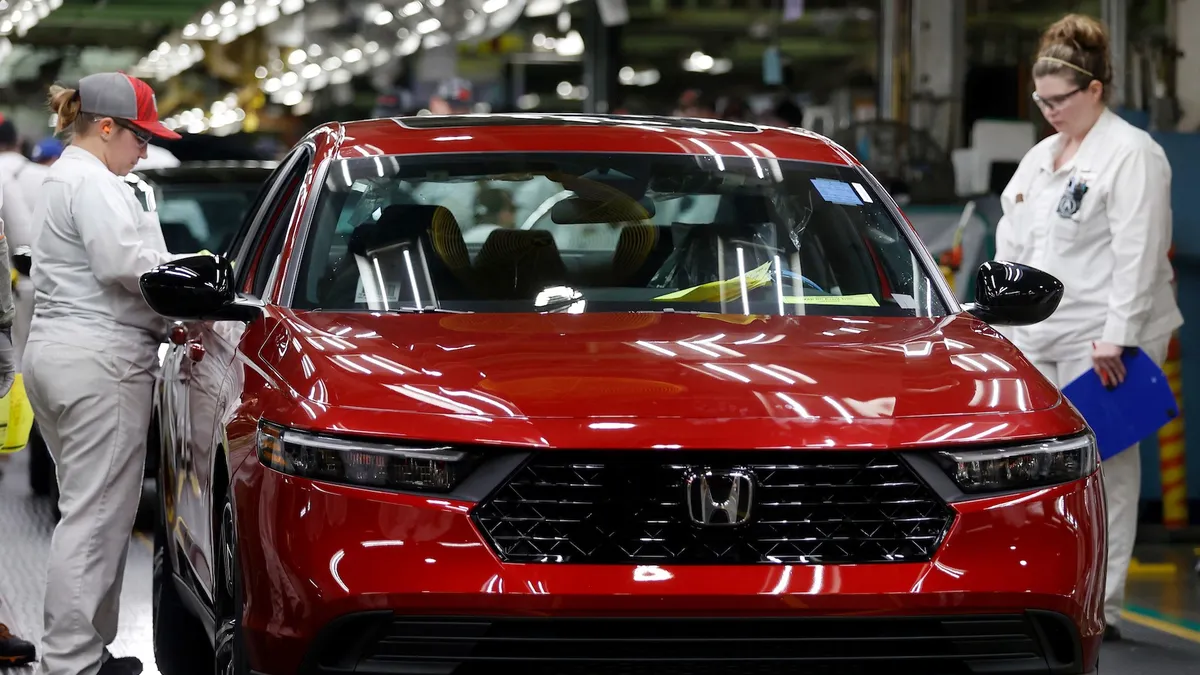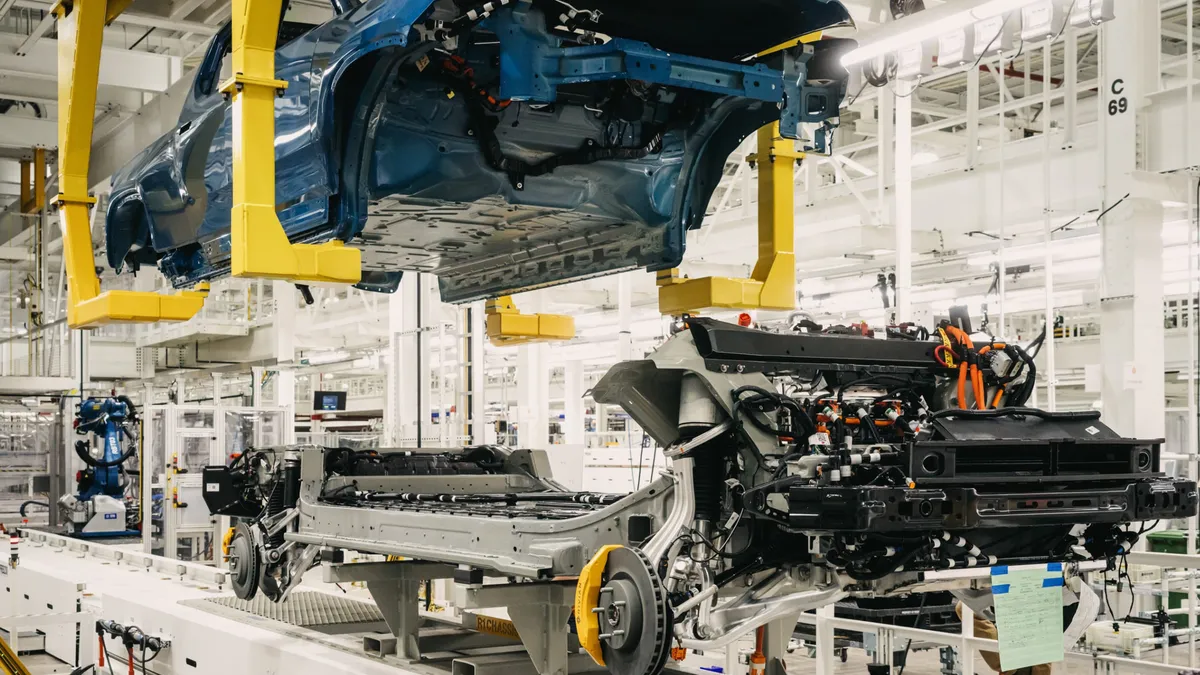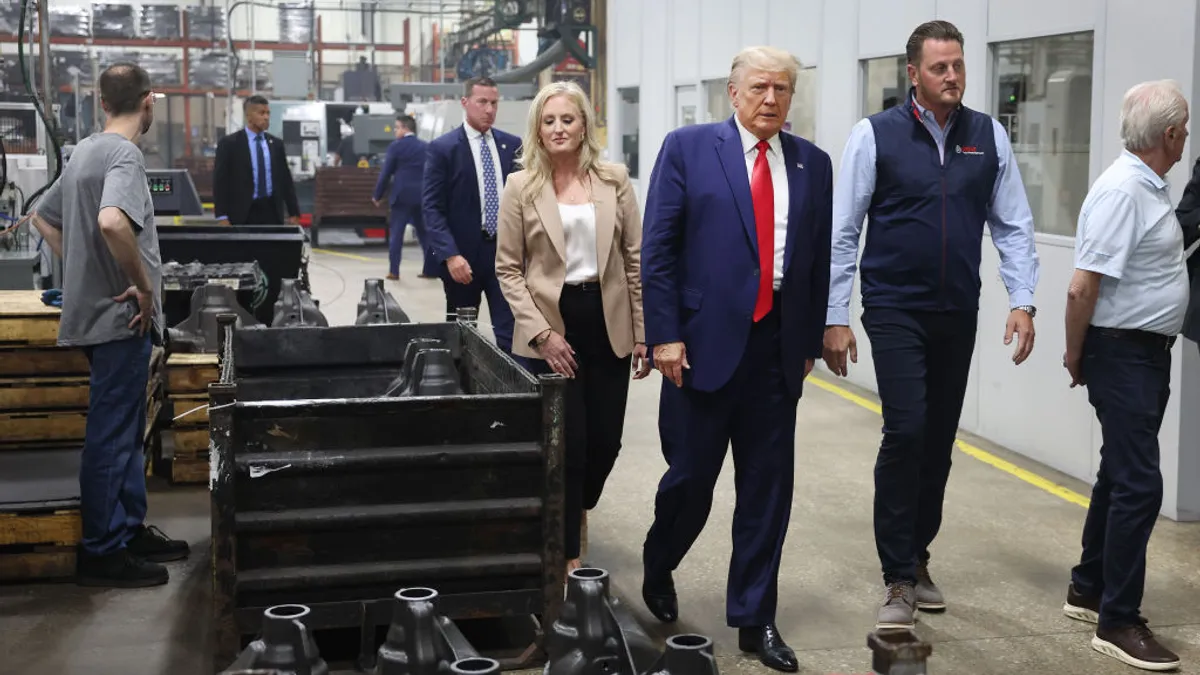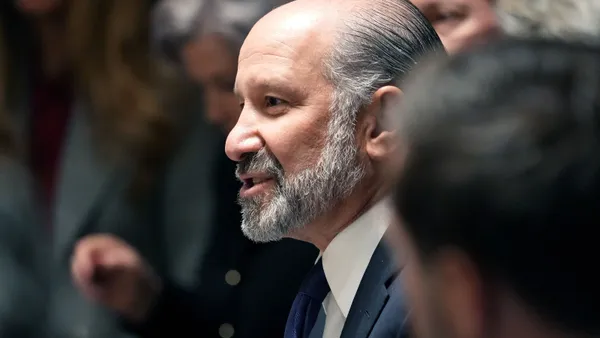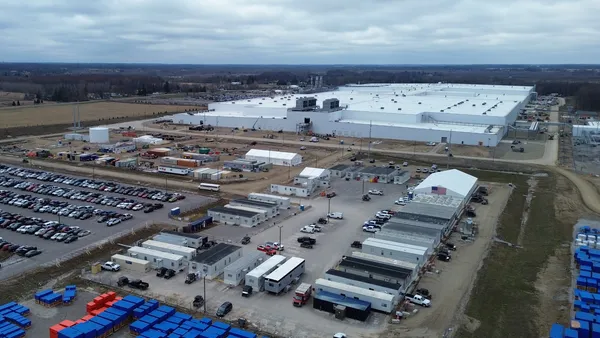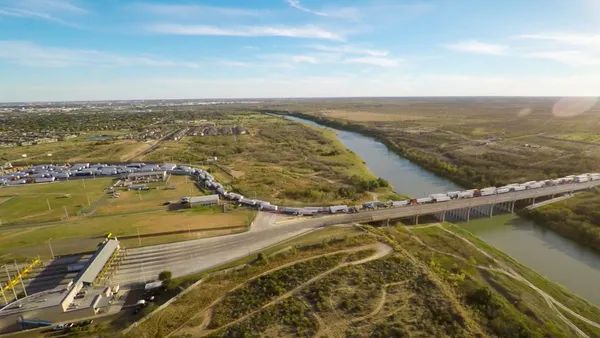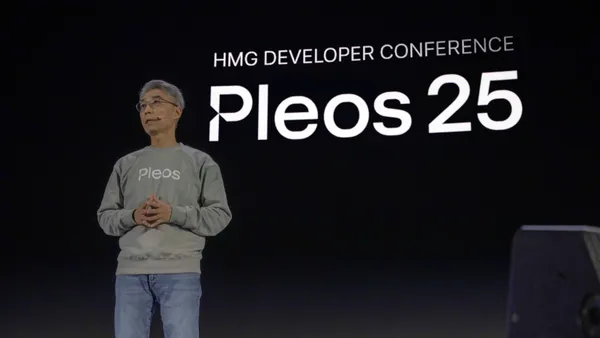Dive Brief:
- A fully electric Acura RSX SUV will be the first model produced at American Honda Motor Co.’s retooled flexible vehicle manufacturing assembly lines in Ohio later this year, the automaker announced on Feb. 3.
- Honda is investing over $1 billion in three Ohio plants to serve as its U.S. “EV hub,” which will also continue producing internal combustion engine vehicles and fully electric models for the North America market. The move gives the automaker flexibility to adapt to changing market conditions, the company said.
- “Beyond adding the capability to produce EVs, we completely reimagined our approach to manufacturing, transforming the Honda production environment with more human-friendly processes and sustainable manufacturing practices,” Bob Schwyn, SVP Honda development and manufacturing of America, said in the release.
Dive Insight:
Honda announced plans to establish its U.S. EV Hub in October 2022 as part of its goal for zero emissions vehicles to account for 100% of its sales by 2040. The three Ohio locations include the automaker’s Marysville Auto Plant, East Liberty Auto Plant and Anna Engine Plant, which are collectively referred to as the “Honda EV Hub.”
The three plants will also serve as a blueprint for Honda’s other North American and global facilities on how to adapt to similar manufacturing methods, the company said.
Honda aims to reimagine vehicle manufacturing across its three Ohio factories in line with its “Triple Action to Zero” strategic initiative. It includes three focus areas — carbon neutrality, clean energy and resource circulation — to help the automaker achieve zero environmental impact by 2050.
In addition to the all electric Acura RSX, the U.S. EV hub will also produce the futuristic Honda 0 Saloon and Honda 0 SUV prototypes unveiled at CES in early January.
Honda and LG Energy Solution have also committed to a $3.5 billion investment in a new joint venture battery facility in Jefferson, Ohio, to produce batteries for Honda and Acura EVs. However, the overall investment in the plant is forecast to reach $4.4 billion, with production scheduled to begin later this year with an annual capacity of approximately 40 gigawatt hours.
The Marysville facility will become the first Honda plant globally to assemble EV battery packs. Among the plant’s upgrades, the automaker reconfigured welding operations using robots and other technology to weld EV bodies on the same production line as Honda’s ICE models.
Honda also created a new dedicated area in Marysville for the installation of battery packs into EVs. The process combines the modules produced by Honda’s joint venture facility with a case megacast at the Anna Engine Plant for use in mid-size and larger vehicles.
The Marysville plant will also assemble smaller battery packs for hybrid vehicles. Honda placed the new hybrid battery assembly closer to the installation area on the vehicle assembly line to prepare for what it expects will be “record customer demand for hybrid-electric models,” the company said.
Employees at Marysville are being trained for new roles in EV production, battery pack assembly and performing quality checks of software-defined vehicles, Honda said.
Honda also installed six, 31-foot tall, 6,000-ton high-pressure die cast machines at its Anna Engine Plant to megacast EV battery case parts, a first for the automaker. Honda says the battery case is much larger than any other part it has die-cast before and it will serve as the main frame structure for the floor of Honda and Acura EVs.
These massive press machines also offer the flexibility to produce other cast aluminum parts, including body and frame parts or engine components for hybrid and electric vehicles.
Honda’s East Liberty Auto Plant also features a new “battery pack mount mezzanine,” which is designed to allow EV models to “disengage” from the main assembly line for EV battery pack installation, the company said. Once the battery is installed, the EVs return to the line for final completion alongside ICE and hybrid-electric models.
Honda also strengthened vehicle carriers in the East Liberty plant’s paint department to support the additional weight of EVs, along with other improvements in the paint process to enhance overall appearance.
Honda is also investing in Canada to build EVs. Last April, Honda and its joint venture partners announced plans to invest up to CAD $15 billion ($11 billion) to build out an electric vehicle supply chain. The plans include a new EV factory in Canada and a battery plant in Alliston, Ontario. The EV factory is expected to begin production in 2028, with a production capacity of 240,000 EVs per year, while the battery plant will have a capacity of 36 GWh per year.



